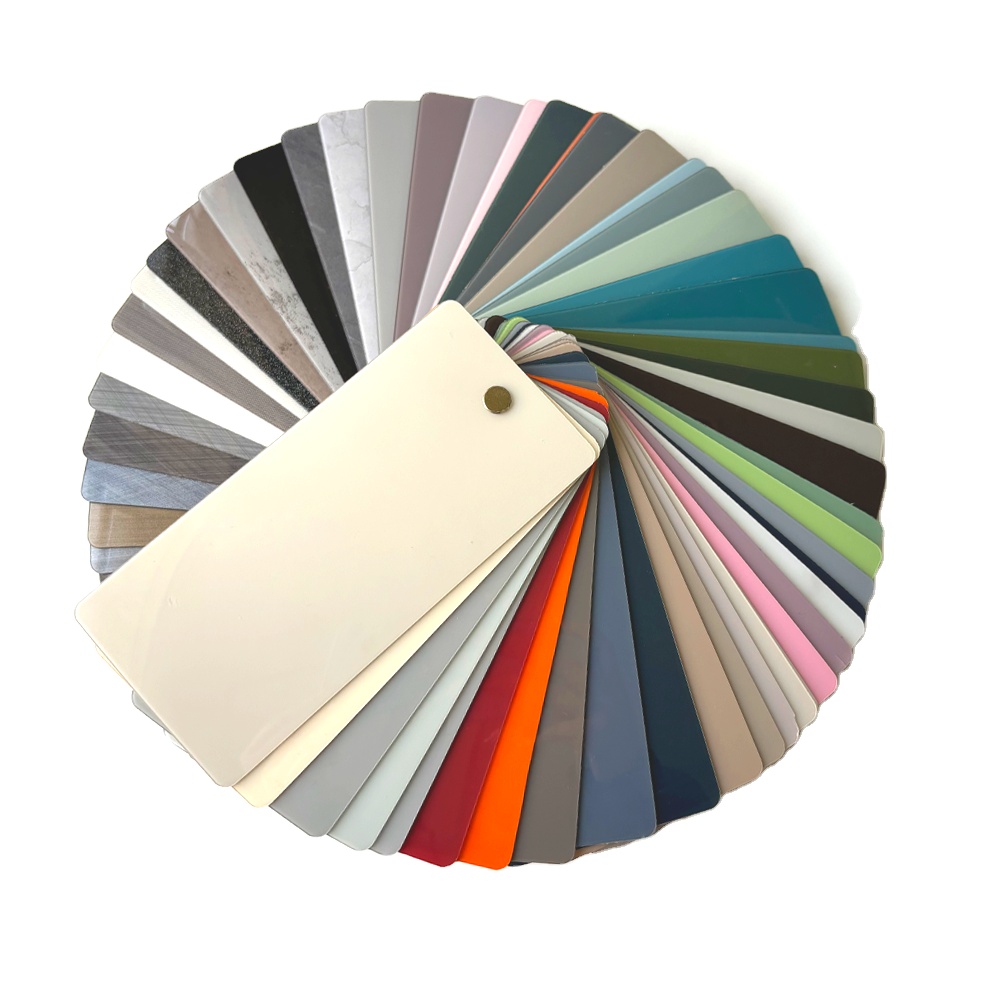In the world of modern materials, PETG laminate sheet has gained significant popularity for its outstanding durability, versatility, and aesthetic appeal. Made from a combination of polyethylene terephthalate (PET) and glycol (G), PETG laminate sheets are widely used across various industries, from signage to packaging, construction, and even medical applications. Known for its superior qualities such as impact resistance, clarity, and ease of processing, PETG laminate sheet is a sought-after material in both commercial and industrial sectors.
PETG laminate sheets are typically transparent or translucent, although they can also be produced in a variety of colors and finishes to meet specific needs. The sheets come in varying thicknesses and sizes, offering flexibility in use for different industries.
The manufacturing process of PETG laminate sheets generally involves the following steps:
PETG is produced through the polymerization of PET and glycol. This process modifies the PET’s molecular structure, improving its clarity, flexibility, and resistance to impact.
The PETG resin is then melted and extruded into thin sheets using a process called extrusion. The molten resin is forced through a mold to form flat sheets that are cooled and solidified.

In the lamination process, an additional layer of material is applied to the surface of the PETG sheet. This layer could be vinyl, acrylic, or other films, providing extra protection and enhancing the sheet's properties. The laminated layers also offer a variety of finishes, from matte to glossy, depending on the intended application.
After the lamination process, the sheets are cut to the desired size and packaged for distribution. Quality checks are performed to ensure consistency in thickness, transparency, and durability.
One of the primary advantages of PETG laminate sheet is its high impact resistance. It is significantly more durable than many other plastic materials, such as acrylic and polycarbonate. PETG laminate sheets are less likely to crack or break under impact, making them an excellent choice for applications where toughness is required.
PETG laminate sheets are known for their exceptional clarity, often offering a level of transparency comparable to glass. This makes them ideal for use in applications where visibility is important, such as in display cases, signs, or protective covers. The high-gloss finish of PETG laminate sheets also enhances the visual appeal of the product.
PETG laminate sheets are resistant to a variety of chemicals and environmental factors. They are less likely to degrade when exposed to UV light, making them suitable for outdoor use in signage, displays, and other applications that require UV stability. The chemical resistance of PETG laminate sheets also makes them ideal for use in industries such as pharmaceuticals, where the material needs to withstand exposure to various substances.
PETG laminate sheets are relatively easy to fabricate and process. They can be cut, drilled, formed, and thermoformed with minimal effort, allowing manufacturers to create a wide range of products. Unlike some other plastics, PETG does not require specialized tools for processing, making it an affordable and convenient option for many industries.
PETG is recyclable, and while it is not entirely biodegradable, its recyclability makes it a more sustainable option compared to materials like PVC. This eco-friendly attribute is especially important as industries look to reduce their environmental impact by choosing recyclable materials wherever possible.
When laminated, PETG sheets gain enhanced protection against scratches and surface wear. This feature extends the lifespan of the material, making it a practical choice for high-traffic areas or products that are subject to frequent handling or movement.
PETG laminate sheets are widely used in signage and point-of-purchase displays due to their high transparency, durability, and ease of fabrication. They can be used for both indoor and outdoor applications, and their UV resistance ensures that the colors and graphics remain vibrant even when exposed to sunlight. Retailers, malls, and advertising companies commonly use PETG laminate sheets for creating attractive, long-lasting displays.
In the packaging industry, PETG laminate sheets are commonly used for food packaging, cosmetic packaging, and retail packaging. Their clarity allows consumers to see the product inside, which is particularly important for food products, cosmetics, and other consumer goods. The laminate also provides a protective barrier that helps preserve the product's freshness and integrity during transportation.
PETG laminate sheets are used in medical packaging and medical device covers due to their high chemical resistance, clarity, and sterility. They are often used to package pharmaceutical products, medical instruments, and other sensitive items that require protection from environmental factors. PETG is also used in protective covers for medical devices, ensuring that they remain clean and intact.
Due to their aesthetic appeal, PETG laminate sheets are also used in interior design and architectural applications. The sheets can be used for decorative panels, glass replacement, partitions, and other design elements. Their ability to mimic the look of glass while offering better durability and less weight makes them a popular choice in modern architecture and interior design.
PETG laminate sheets are used in the electronics industry to create protective covers for appliances, screens, and panels. Their impact resistance and transparency allow for durable and visually appealing covers for items like refrigerators, washing machines, and televisions.


 English
English 中文简体
中文简体









